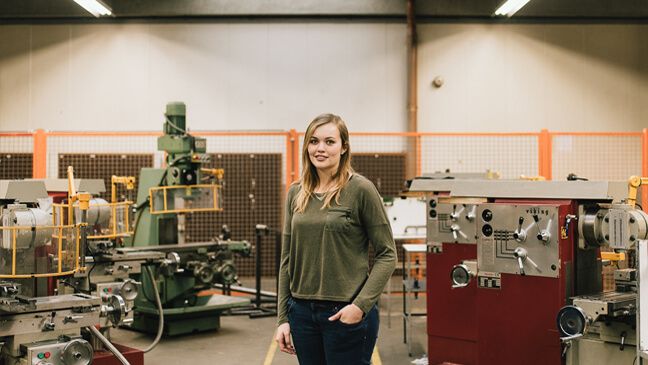European Union Employment Issues: European Commission Forecasts for 2015
Among more than two dozen special agencies in the EU, there is one that deals with forecasting employment in the region – European Centre for the Development of Vocational Training (Cedefop). The other day Cedefop published its first forecast of labor potential in the EU and the prospects for the development of the labor market for the next seven years. The main conclusion – today about 80 million of the 210 employed in the EU-25 (Bulgaria and Romania have not been taken into account in the forecast yet) are highly educated specialists outside the field of physical labor. And such workers will need even more.
A forecast report prepared by the Cedefop Agency, entitled “Labor Requirements for a Future Europe: Mid-Term Forecast,” covers the period up to 2015. The forecast emphasizes that in most countries a clear line will be traced to a further increase in the demand for labor and various professions. Including even the most ordinary types of employment, especially given the rapid growth of various areas of the service sector, as well as active organizational and technological transformations in the new structural sectors of the economy of the EU countries.
Gradual transformation
At the same time, the Cedefop forecast warns against a frivolous approach to “fashionable service” transformations and emphasizes that the manufacturing and primary sectors are far from exhausting not only their capabilities, but also the implications for economic development in many countries. This is especially true for the “new countries” that have recently joined the EU, which are just beginning the transition from post-industrial social and economic structures to the “new economy”.
However, transformations are already visible in almost all countries, despite the fact that a significant number of people are still employed in traditional sectors of the economy; it is forecasted that this situation will continue in the medium term.
In the two main “scenarios” of labor market development in the EU (optimistic and pessimistic), one thing remains perhaps the only thing – the growing need for almost all available and expected types of specializations.
Presenting the results of the forecast to the general public, the EU Commissioner for Education, Vocational Training, Culture and Youth Affairs, Mr. Jan Figel, said: “The world economy is in constant dynamic; the same applies to those specialties that people will need in the future. Very often we hear questions about what these specialties should be. Now we have a forecast that gives a clear picture of where we can experience difficulties, and also where and in what areas a shortage of labor is expected in the future. Having such information, both young and old can adequately evaluate their curricula that will help them formulate their tasks in education and training. ”
Some predictions
The analytical forecast “Future skill needs in Europe: medium-term forecast”, calculated for the period until 2015, shows that approximately 10 million people will be employed in the primary industry of the EU (which shows a decrease of 12 million compared to 2006 . and 1996 – for 15 million people). 34.5 million people will be involved in manufacturing in the European Region, compared with 35 million in 2006 and 38 million in 1996.
It seems that the main result of the forecast is a statement of the fact that the main trends in employment relate to service sectors, where for the proper development of the EU economy by 2015, it will need approximately 13 million new specialists of various profiles. At the same time, the primary sector of the economy will decrease by about 2 million jobs and manufacturing sectors by 0.5 million.
Sectors such as transport and delivery, as well as tourism, will require 3.5 million new workers. In general, the sphere of business and services will be the most dynamic for a seven-year period. About 9 million new specialists will be required here. An additional 3 million seats will be created in education, healthcare and social welfare, which will also require new staff.
The demand for highly qualified specialists is also growing: here the peak has not yet been reached far. Already today, about 80 million out of 210 employed in the EU-25 (Bulgaria and Romania have not yet been taken into account in the forecast) are highly educated specialists outside the scope of physical labor. And even higher growth is projected.
In general, in the next 10 years, Europe will need more than 12.5 million specialists with higher education and 9.5 million with secondary technical education. It is emphasized that even “ordinary” vacancies with the use of physical labor will require additional qualifications, however, a decrease in such specialties by 8.5 million people is projected.
There is no need to say that such forecasts create significant problems for employment in the EU countries. Especially given the declining birth rate and the need to “replace” retiring workers. On the other hand, higher hiring requirements will require much more knowledge for similar work before.
Cedefop also prepares sector-based analytical forecasts: analyzes in the tourism sector, nanotechnology, the agricultural sector and woodworking are on the way; A report on the health and environmental sector is expected soon.
Cedefop Information
The European Center for the Development of Vocational Education, known as Cedefop (the French abbreviation for The European Center for the Development of Vocational Training), is a specialized agency of the European Union. This is one of the first EU agencies: it was established back in 1975 and has been located in Greece since 1995. Its main task is the promotion of vocational education and training (VET) in the EU countries, so that economic development is “combined” with the need to train the right specialists of the appropriate level and quality. Cedefop advises EU countries on new and promising VET methodologies as an important element of national policies on employment, social cohesion and increasing competitiveness.
This post is also available in:
 English
English  Русский (Russian)
Русский (Russian)





